There are about eight different woodpeckers in South Carolina. These range from the pileated woodpecker, which is quite large, to the downy woodpecker, which is the opposite. You might think that all woodpeckers are generally the same, but this couldn’t be further from the truth.
For instance, the northern flicker hardly even looks like a woodpecker!
Below, we’ll talk about these nine woodpecker species and how to identify them.
1. Downy Woodpecker

Downy woodpeckers are one of the most common species in South Carolina.
©Steve Byland/Shutterstock.com
The downy woodpecker is the smallest species in South Carolina, with a body length of only 6 inches. They have an ordinary-looking black and white striped body, with a patch of red on the back of each male’s head.
These birds are very common throughout the state. They can live in a range of different habitats, including forests, parks, and backyards. Therefore, if you spot a woodpecker in South Carolina that is smaller, there is a good chance that it is a downy woodpecker.
This species is an insectivore, meaning that they mostly eat insects. Their long, pointed tongue can reach far into tree bark and other tight spaces where bugs hide. They can also eat spiders, fruits, and seeds.
When nesting, they excavate their own nests in dead trees.
2. Hairy Woodpecker
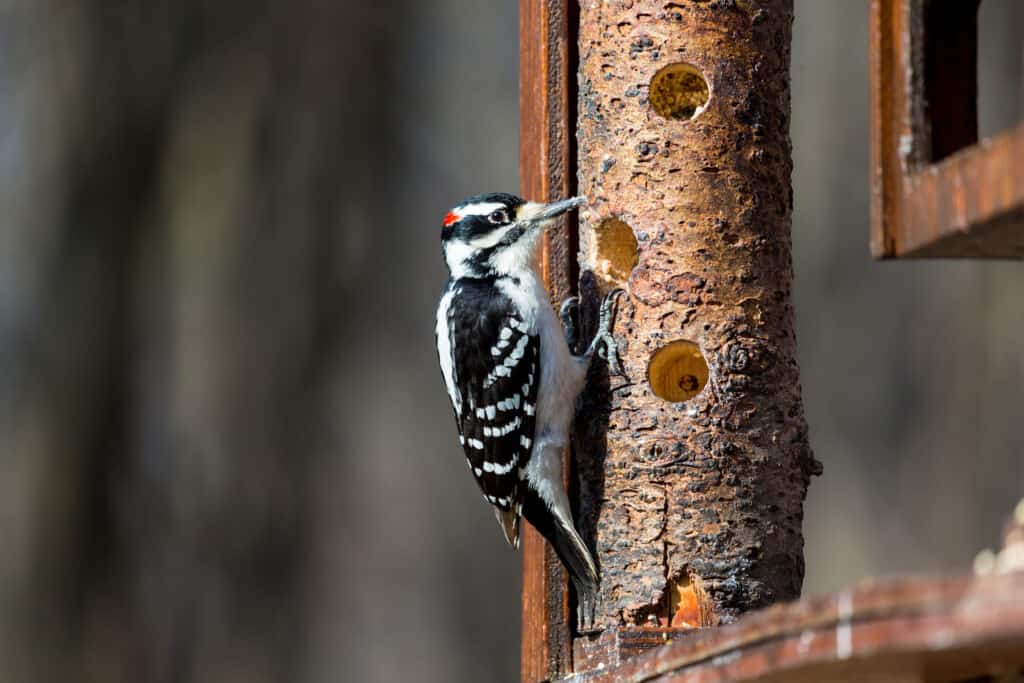
Hairy woodpeckers are just a bit bigger than downy woodpeckers.
©Glass and Nature/Shutterstock.com
The hairy woodpecker is slightly larger than the downy woodpecker, with a length of about seven inches. They have a similar black and white striped body, and the males often have a red patch on the back of their head. Like many other species, these woodpeckers are often found in a variety of habitats.
Hairy woodpeckers are also insectivores, but they eat larger insects than downy woodpeckers. They may also consume nuts and berries. Like many woodpeckers, they excavate their own nests in dead trees.
3. Red-bellied Woodpecker
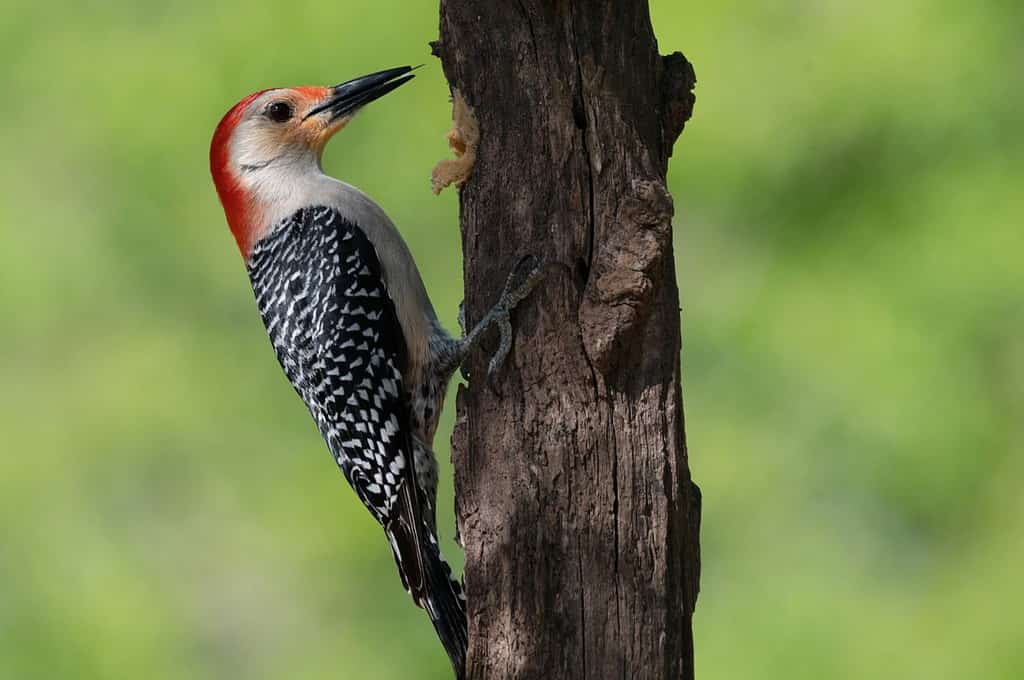
This woodpecker species is quite large.
©Connie Moore/Shutterstock.com
These woodpeckers are even bigger than the previous two we explored. They can be up to 9 inches long and have a white and black striped back. Their bellies and nape are red, like you might expect from their name. The males also have a red crown, which sets them apart from the females.
Red-bellied woodpeckers are also insectivores, so they consume mostly insects. However, they also eat fruits, nuts, and seeds.
They’re known for their drumming sound, which they use to attract mates and defend their territory.
4. Red-headed Woodpecker
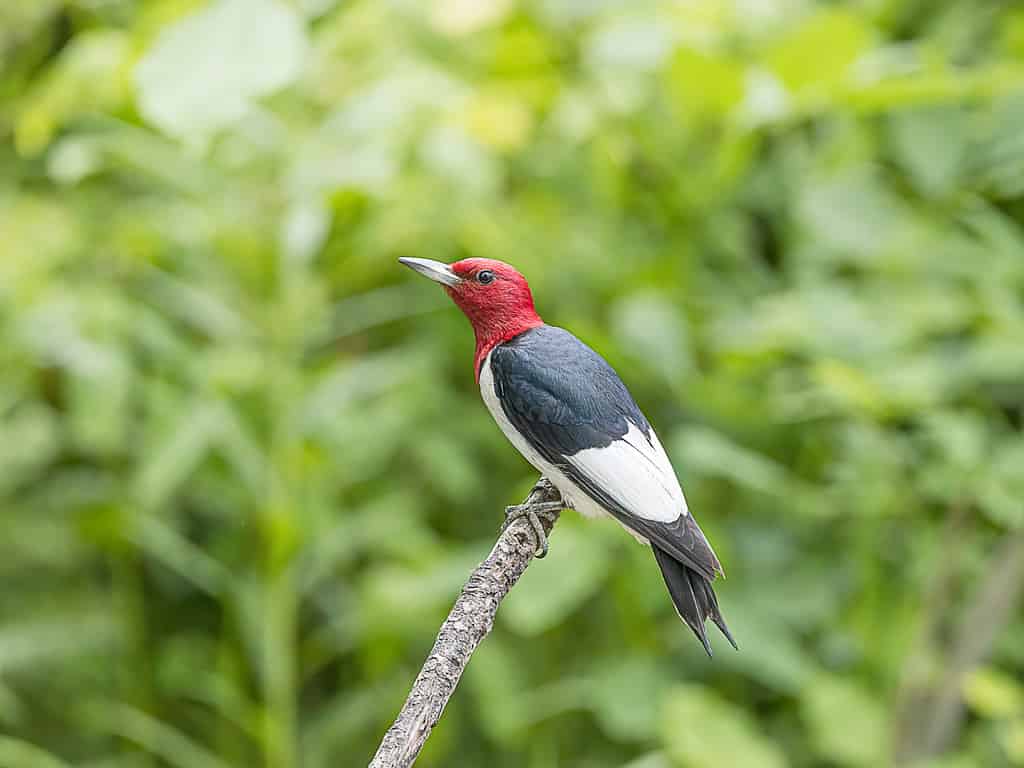
There are eight different woodpeckers in South Carolina.
©ilkah/Shutterstock.com
Red-headed woodpeckers are some of the most colorful in South Carolina. They have a bright red head, black back, and white belly. They’re very easy to set apart from other woodpeckers due to their bright, distinct coloration.
The females will have a brown head, though. These woodpeckers are declining in numbers and are now considered a threatened species in South Carolina.
These birds are insectivores, but they also consume nuts and fruits. They’re mostly known for their bright red heads, which they use to attract mates. Like many woodpeckers, they are cavity nesters. However, they usually nest in live trees.
5. Pileated Woodpecker
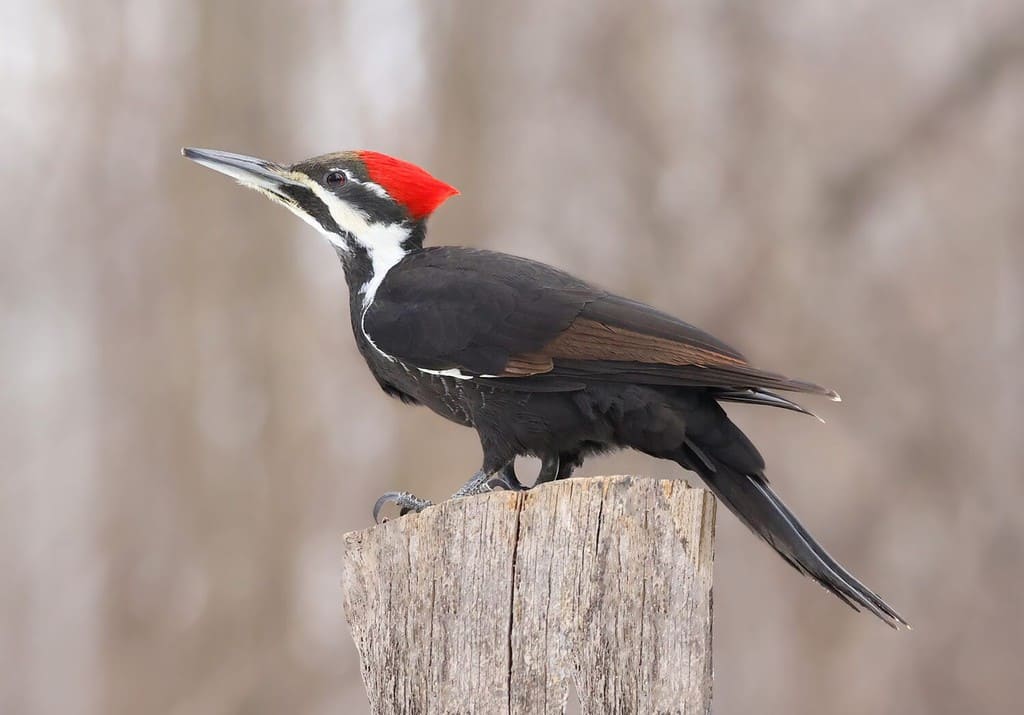
Pileated woodpeckers are
huge!
©Vlad G/Shutterstock.com
The pileated woodpecker is easily the largest woodpecker in South Carolina. They are about 19 inches long – much larger than most other woodpeakers in the state. They have a completely black body with a white stripe down their back. These birds also have a large red crest on their head.
These birds are mostly found in mature forests with plenty of dead trees. They typically nest in these trees.
Like many woodpeckers, they are insectivores. However, they consume much larger insects.
6. Northern Flicker
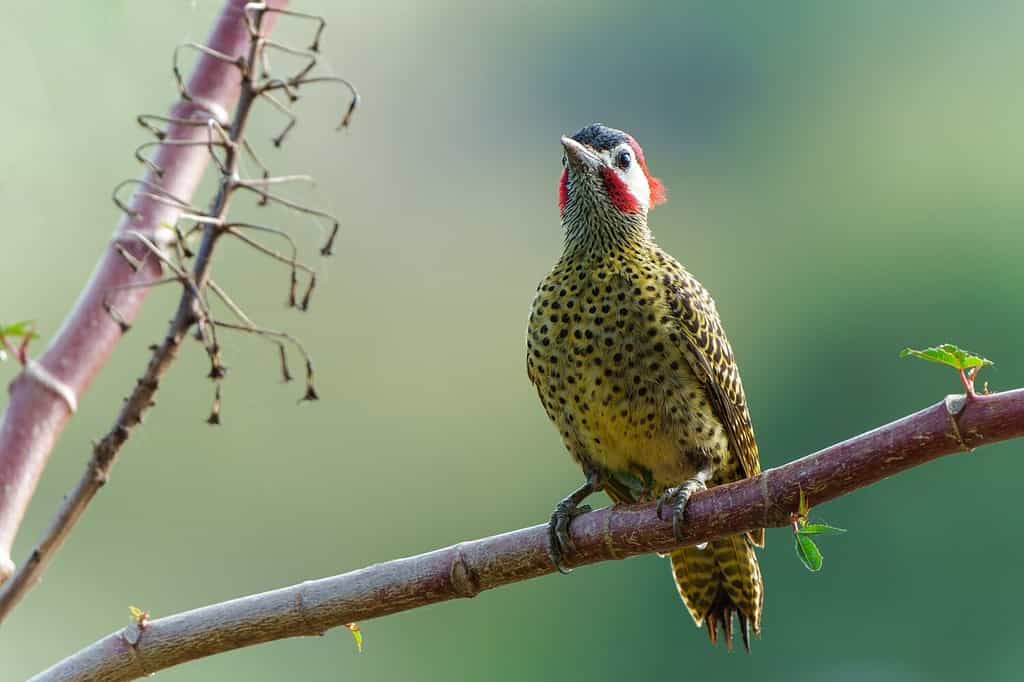
Despite their name, northern flickers are woodpeckers.
©Henk Bogaard/Shutterstock.com
Northern flickers are also pretty large at about 12 inches long. They have a brown body with black and white stripes on their wings and tails. The males also have a red nape and black “mustache.”
As adaptable birds, Northern Flickers can live in many different habitats, including forests and open fields.
Unlike other woodpeckers, these birds are omnivores. They eat a variety of foods, including insects, fruits, and seeds. They’re much more versatile than most other bird species.
7. Yellow-Bellied Sapsucker

Yellow-bellied sapsuckers are insectivores, but they also consume sap.
©Christopher Unsworth/Shutterstock.com
Despite their name, yellow-bellied sapsuckers are mostly insectivores. However, they do get some of the moisture from sap, which they get by digging holes into trees. They drill holes into trees known for their sap production, like maples. Then, they eat the bugs that are attracted to this sap.
They’re cavity nesters like most woodpeckers, mostly nesting in dead trees.
These woodpeckers are about 8 inches long. They’re bigger than most, but not close to being the biggest species. They have a black and white striped body with a yellow-ish belly and red throat.
The males also have a red forehard, which sets them apart from the females.
You can find these birds in forests and woodlands of all sorts. They’re particularly attracted to sap-producing trees.
8. Red-cockaded Woodpecker
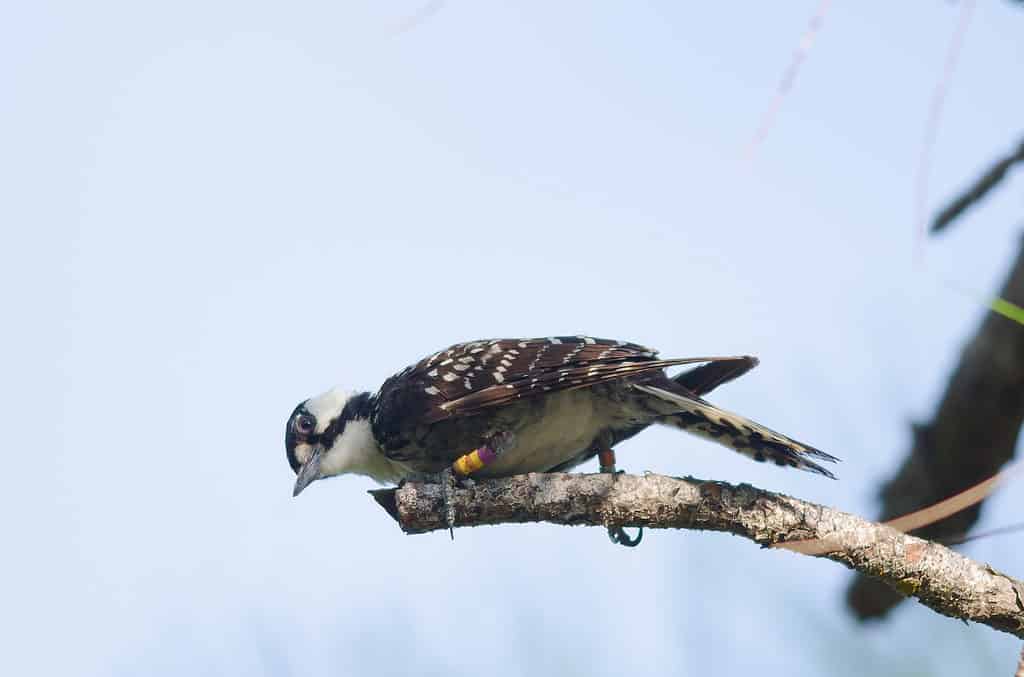
Near-threatened Red-cockaded Woodpeckers are one of the most difficult to find in South Carolina.
©iStock.com/spates
This is a rare woodpecker that is found in old-growth pine forests in South Carolina. They aren’t nearly as common as other woodpeckers, making them much more challenging to find. They have a red crest on their head, and the males have a red nape they use to attract mates.
They’re black and whit estriped like most other species, but they do have a red crest on their head.
They live mostly in old-growth pine forests, where they nest and forage. Like most woodpeckers, they are insectivores.
Summary of Woodpeckers in South Carolina
| Number | Woodpecker Name |
|---|---|
| 1 | Downy Woodpecker |
| 2 | Hairy Woodpecker |
| 3 | Red-bellied Woodpecker |
| 4 | Red-headed Woodpecker |
| 5 | Pileated Woodpecker |
| 6 | Northern Flicker |
| 7 | Yellow-bellied Sapsucker |
| 8 | Red-cockaded Woodpecker |
The photo featured at the top of this post is © Nina B/Shutterstock.com
Thank you for reading! Have some feedback for us? Contact the AZ Animals editorial team.







